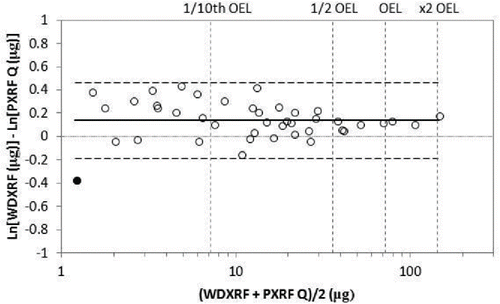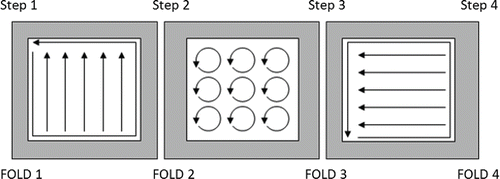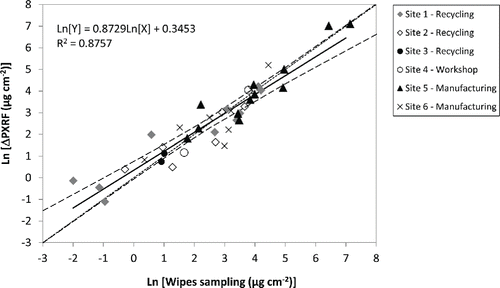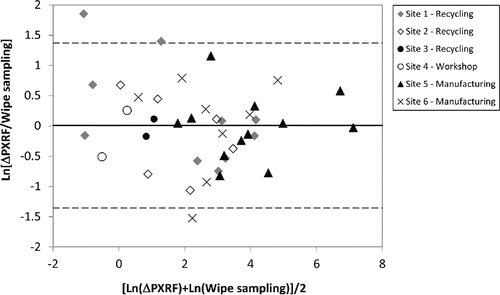Figures & data
Table 1. PXRF calibration checks and analytical performance for lead quantification on membrane filters (n = 35, except for repeatability where n = 12).
Figure 2. Photograph of a 25 mm diameter dust filter collected using the IOM sampler with schematic representation of a 8 mm PXRF X-ray beam (black circle).
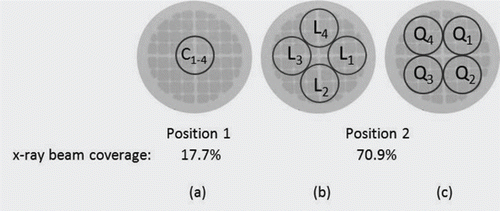
Table 2. Details on workplaces visited.
Table 3. Summary of the regression models.
Figure 3. PXRF results for the outer region (Q) of the filter against WDXRF results – open circles: data points above PXRF LOQ; solid circle: data point below PXRF LOQ; dotted line: 1:1 correlation line; continuous thick line: fitted linear regression model; dashed curves: 95% confidence interval on the regression line.
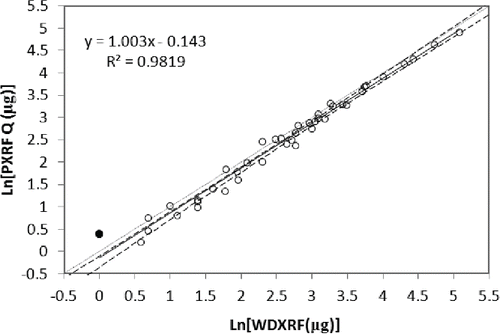
Figure 4. Level of agreement between the two XRF instruments results – open circles: data; solid circle: data point below PXRF LOQ; dotted line: no difference between instruments; continuous thick line: fitted linear regression model; thick dashed lines: 95% limits of agreement between instruments.
